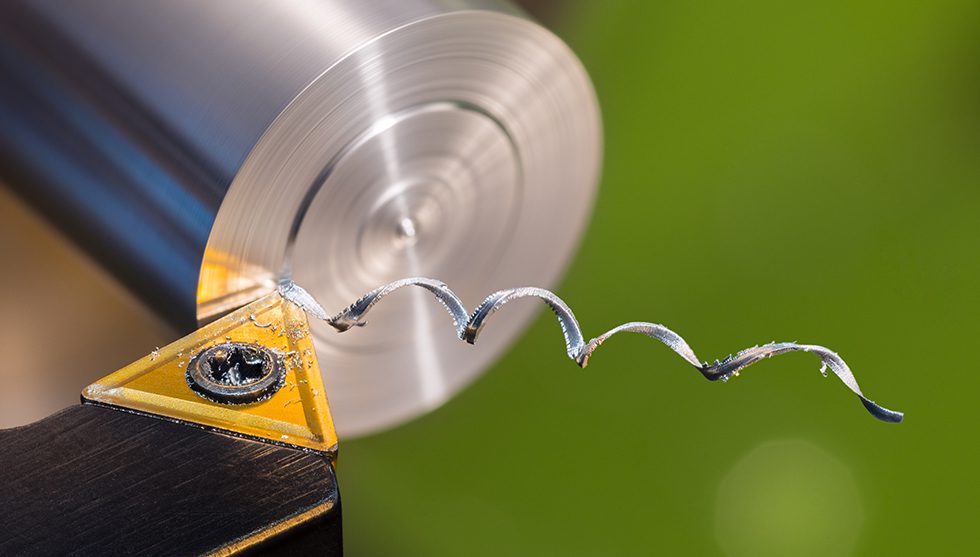Precision machining is a specialized manufacturing process that creates components with extremely tight tolerances, typically measured in thousandths of an inch. This level of accuracy is essential for building parts used in industries like aerospace, medical devices, and high performance machinery.
There are multiple types of precision machining methods used by manufacturers, including CNC milling, CNC turning, and wire EDM. In this article, we’ll take a look at each method and the uses and benefits of each one.
Three types of precision machining
CNC milling, CNC turning, and wire EDM complement each other and are often all used to create highly precise products.
CNC milling – This method uses rotating cutting tools to remove material from a workpiece and has the ability to move along multiple axes to create complex geometric shapes and features. The workpiece remains stationary while the cutting tool moves and rotates.
CNC turning – In contrast to CNC milling, CNC turning involves a workpiece that rotates while stationary cutting tools remove material to create cylindrical parts. Both CNC methods rely on computer controlled movements to achieve highly precise dimensions and surface finishes.
Wire EDM – Also known as electrical discharge machining, wire EDM employs a thin electrically charged wire to cut through conductive materials, instead of physical cutting tools. It uses electrical discharges, or sparks, to achieve even finer tolerances than traditional CNC machining. It is especially effective at creating complex shapes in hardened materials, or when very sharp internal corners are required.
Taken together, these different precision machining processes are ideal for manufacturing extremely accurate components that meet the rigorous standards of modern industries.
The benefits and uses of CNC milling, CNC turning, and wire EDM precision machining methods
Each of these processes has its own strengths and optimal applications, which is why modern precision machining companies often utilize all three technologies. Which option you choose depends on a variety of factors, such as the desired geometry, material properties, required tolerances, surface finish requirements, and production volume.
Precision CNC milling benefits and uses:
Precision CNC milling offers tremendous versatility in delivering complex 3D geometries, making it invaluable for building molds, dies, and custom fixtures used in various manufacturing processes. Its ability to produce parts with flat surfaces, angular features, and irregular shapes means that it’s particularly effective in aerospace manufacturing, where it’s used to create structural components like wing ribs and brackets. The automotive industry heavily relies on CNC milling for prototype parts and custom components, while the medical device industry employs it to create components with precise surface features.
One of milling’s greatest advantages is that it can work with a wide range of materials, from soft plastics to hardened steels, making it a fundamental technology for precision machining companies.
Precision CNC turning benefits and uses:
Precision CNC turning excels in the production of cylindrical or round parts and is the go-to choice for creating internally and externally threaded components. It’s particularly efficient at manufacturing shafts, pins, bolts, and other rotary components that are essential in a variety of industries. The oil and gas sector frequently uses CNC turning for producing valve components and fittings, while the medical device industry relies on it for creating implants and surgical instruments.
When compared to CNC milling, CNC turning is often more cost effective for round parts due to its faster material removal rates. The process is also able to achieve very smooth surface finishes on cylindrical surfaces, making it indispensable in precision manufacturing.
Wire EDM benefits and uses:
Wire EDM stands out for its unique ability to cut extremely hard materials that would be challenging to machine using conventional methods. This technology can create very sharp internal corners that aren’t possible with rotating cutting tools, making it essential for producing precise stamping dies and punch tools. The electronics and semiconductor industries employ wire EDM for making small, intricate parts, while manufacturers use it for cutting thin walled components without distortion. Since there’s no physical contact between the cutting tool and workpiece, mechanical stresses are eliminated, making it perfect for creating precision gears and splines. It can produce extremely tight tolerances, making it invaluable for applications requiring the utmost precision.
When it comes to choosing precision machining companies, you have many options at your disposal. It’s important to take into account their past work, certifications, and a variety of other factors. For example, at Highland Machine, we are ISO 9001:2015 Certified, demonstrating our commitment to quality management standards. Plus, we’re an end-to-end operation that handles sheet metal fabrication, precision machining, design and engineering services, assembly, inventory management, and more for the medical, electronic, automotive, aerospace, and printing industries.
Contact our team for your next precision machining project!
